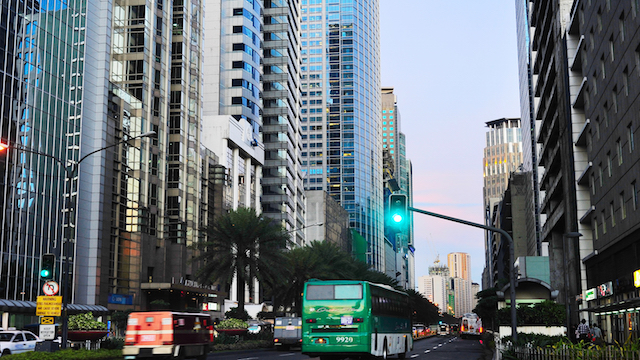Retail property development in Metro Manila will stay robust over the next 12 months, says property consultancy Colliers Philippines.
It cites strong demand because of the enhanced purchasing power of Filipinos thanks to outsourcing business revenue and remittances from expatriates.
It also refers to the latest poll of the Bangko Sentral ng Pilipinas (BSP), the Central Bank of the Philippines, which shows consumer confidence is at its highest since the survey started in 2007. The bank says consumer optimism is buoyed by the availability of more jobs, stable prices for commodities, an anticipated increase in salaries and effective government policies.
However, Colliers says malls in Metro Manila have become too generic, all housing almost the same range of tenants.
“Developers must recognise they need to offer a unique tenant mix to consumers and position toward a specific market, such as the millennials with their high disposable incomes.”
F&B is still the major driver of retail spending in Metro Manila, accounting for 30 to 40 per cent of leasable space in shopping centers – among the highest ratios in Asia Pacific. About 40 per cent of Philippine household spending goes on food and beverage.
Driving growth
Colliers sees this trend continuing over the long term as consumer spending, which accounts for about two-thirds of the country’s GDP, keeps driving overall economic growth.
For next year, Colliers expects the completion of nearly 500,000 sqm of leasable retail space with a mix of regional, neighborhood and district malls under construction. The malls are distributed around Metro Manila with key developments in emerging business districts like Arca South in Taguig, Circuit Mall Phase 1 in the Makati fringe and Cloverleaf Mall in northern Quezon City.
Meanwhile, rental rates in Ayala Center have posted 2 per cent growth to PP1535 (US$30.77) a square metre per month from PP1505. Ortigas Center rental rates rose 1.7 per cent to PP1376.
Colliers expects rental rates in major business districts to grow steadily to a cap at around 4 to 5 per cent over the next 12 months. Retail vacancies remain low in Metro Manila, with regional and super-regional malls recording high occupancy rates.
“This is despite some major retailers deciding to reduce their store footprints and consolidate their portfolios,” says the report.
The super-regional mall vacancy rate was practically unchanged at 0.3 per cent in third quarter from 0.4 per cent the first quarter. Regional mall vacancies stood at 1.5 per cent in the third quarter from 1.3 per cent in the first quarter.
Vacancy rate steady
Factoring in smaller formats such as neighborhood and district shopping centers, the overall vacancy rate in Metro Manila is steady at about 7 per cent. Colliers expects the figure to rise to 10 or 11 per cent following the completion of about 380,000 sqm of extra leasable space in the current quarter, but sees this easing back to 7 or 8 per cent as retailers absorb the new space.
Between April and September alone, an estimated 118,000 sqm of leasable space was added to Metro Manila’s retail space, bringing the capital‘s stock to 6.3 million sqm.
Of the projects completed in the third quarter, the most significant was the expansion of Festival Supermall, adding about 57,000 sqm to Alabang’s retail stock.
Northern Metro Manila’s retail space expanded by 33,000 sqm following the delivery of Up Town Center phase two in Quezon City.
In the emerging business district in the Manila Bay Reclamation Area, about 25,500 sqm was added to the retail stock with the opening of the Solaire retail complex as well as the completion of S Maison, the high-end retail complex of the six-star Conrad Hotel. An unprecedented 570,000 sqm of retail space is estimated to be delivered for the entire year.






